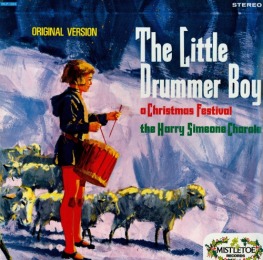 “At last,” Servaas sighs as he tears ‘December’ from the calendar above the counter in Boggel’s Place. “I simply cannot listen to that silly tune any longer.”
“At last,” Servaas sighs as he tears ‘December’ from the calendar above the counter in Boggel’s Place. “I simply cannot listen to that silly tune any longer.”
As usual, Servaas is in a bad mood in the beginning of the year. He says he’s just gotten used to writing 2015 on his cheques and now it’ll take weeks before he gets 2016 on every one. Gertruida laughs at this, knowing it isn’t true: Servaas simply doesn’t want to add another year to his age.
“Oh shus, you old sourpuss! Christmas and New Year is a time to count your blessings, man! Cheer up and have another Cactus Jack…”
“It’s the tune with all those barumpapapum’s in it. It’s like the composer didn’t have enough words for the music, so it’s barumpapapum this and barumpapum that. And it’s been on the radio since November. Argh! I can’t stand it!” He knits his brows together and stares angrily at the old transistor radio on the shelf. “At least we’ll have eleven months of peace now…”
“But it’s such a beautiful story, Servaas. A little boy with a drum, no gifts to offer the newborn Christ, and then the solution: he plays his best for Him. So sweet, actually.”
Servaas shrugs. He’s not going to grace the debate by adding to it.
“Did you know, Servaas, that it’s one of the most popular modern Christmas songs? However. it has its roots way, way back. If I remember correctly, it’s based on the 13th-century medieval legend by Gautier de Coincy, in about 1220, called Le jongleur de Notre-Dame. The story tells of a juggler who became a monk and the French author, Anatole France, published it again in 1892. Beautifully written, the legend sketches the events on Christmas day, when all the monks in the monastery offered gifts to the statue of Mary. However, the juggler was too poor to buy one and had nothing fancy to offer. What to do? When it was his turn to lay down a gift in front of Mary, he stepped up and did what he does best: juggle.
“The other monks were furious…but then a miracle happened. The statue came alive, and smiled at the monk. Oh, the surprise on the other monks’ faces! One moment they’re scolding the poor juggler, the next they realise the importance of honesty. If you give your best to Him – however insignificant it might be – there is joy in heaven!”
“Thanks for the lecture, Professor Gertruida. I don’t need it.”
“Oh yes, you do, Servaas. Katherine Kennicott Davis wrote the song in the middle of WW II, in 1941 and called it The Carol of the Drum. That song evolved into the popular song we know today. Incidentally, the Trapp Singers – the family made famous by The Sound of Music – made the first recording. You’ll remember that an earlier generation of the Trapps were responsible for the preservation of Silent Night.
“The point, Servaas, is this: something out of antiquity resurfaced after centuries to bring joy and hope to us today. The message is simple, but strong. Be who you are – the best you, you can be – and that is good enough. No need for pretence and glamour – just be simply who and what you are. For that, you get a smile from Him.”
Servaas keeps on staring at the radio.
“Oh, and one more thing, Servaas. If your mood is the only thing you can offer Heaven today, I doubt if you will be smiled on. The song is a challenge, my friend: it asks you to offer the best in you at all times. Your gift to those around you are as important as the drum the little boy played, or the apples the poor juggler tossed up in the air. If it is given with a joyous heart, it is the most precious thing you can bestow on others… Think about that and stop glaring at the radio. It’s not going to help anything to be angry about a song…or will you keep on spoiling the day by being childish?”
Servaas goes ‘harrumph’. Then he blushes.
Then, to everybody’s surprise, he starts drumming on the counter with his fingers…
